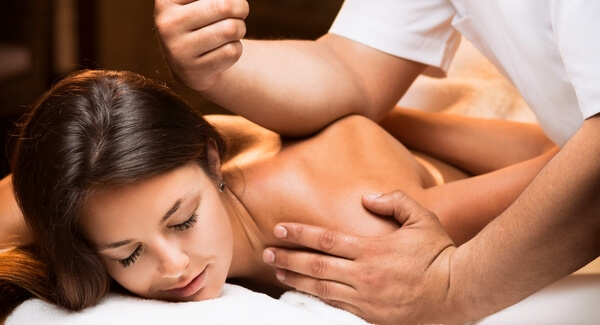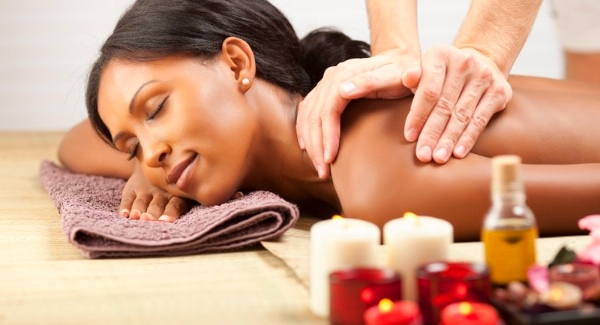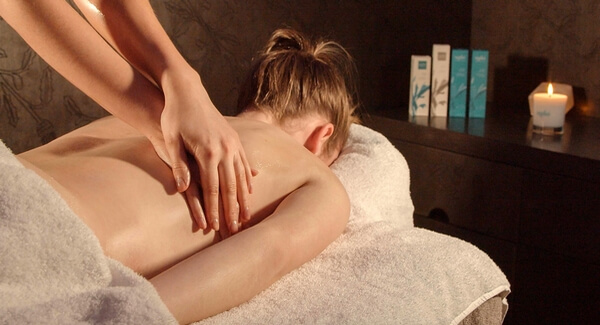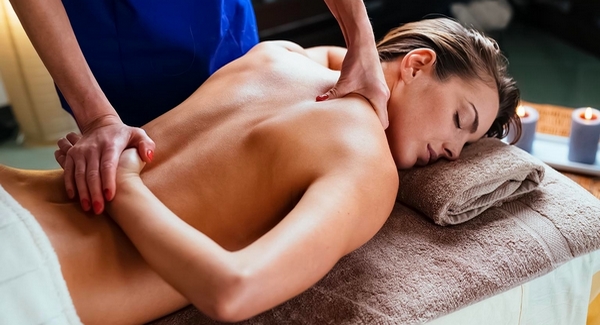What to Expect During a Traditional Thai Massage Session

If you've never experienced a traditional Thai massage, the prospect of your first session might bring both excitement and uncertainty. What should you wear? Will it hurt? How is it different from other massages you may have tried? These questions are entirely natural when approaching a practice that differs significantly from the familiar Western spa experience.
Understanding what to expect during a Thai massage session helps you arrive prepared, relax more fully during treatment, and gain maximum benefit from this ancient healing art. Unlike the table-based, oil-using massages common in Western contexts, Thai massage unfolds as a dynamic, interactive practice performed on a floor mat with the recipient fully clothed. The therapist uses hands, forearms, elbows, knees, and feet to apply pressure, compression, and assisted stretching that release tension, improve flexibility, and restore energetic balance.
This comprehensive guide walks you through a traditional Thai massage session from arrival to departure, explaining what happens at each stage, what sensations you might experience, and how to communicate effectively with your therapist to ensure the best possible experience.
Before You Arrive: Preparation and Considerations
Your Thai massage experience actually begins before you enter the treatment space. A few simple preparations enhance your session and help you arrive in an optimal state to receive the work.
Choosing What to Wear
Unlike Western massage where you undress and lie beneath sheets, Thai massage is performed fully clothed. This fundamental difference requires specific clothing choices:
Ideal clothing: Loose, comfortable garments similar to what you might wear for yoga or casual exercise. Think lightweight cotton or breathable fabrics that allow free movement.
Top: A comfortable t-shirt, loose-fitting top, or yoga shirt. Avoid tight-fitting garments that restrict movement or create uncomfortable pulling during stretches.
Bottom: Loose trousers, yoga pants, or comfortable athletic wear. Traditional Thai fisherman trousers are ideal if you have them. Avoid restrictive jeans, tight leggings, or clothing with bulky zippers or buttons that may cause discomfort during floor-based work.
What to avoid: Tight clothing, restrictive waistbands, garments with excessive buttons or zippers, very short shorts or skirts, and anything you wouldn't feel comfortable moving in freely.
If you forget: Many Thai massage establishments provide appropriate clothing (typically loose cotton drawstring trousers and a comfortable top). Don't hesitate to ask if suitable attire is available.
Timing Your Session
Avoid eating heavily: Come with an empty or nearly empty stomach. A large meal shortly before your session can create discomfort during abdominal work and certain positions. If you need to eat, opt for a light snack at least an hour before your appointment.
Hydrate beforehand: Drink water before your session, but avoid excessive liquid intake immediately prior to avoid needing bathroom breaks during treatment.
Allow transition time: Arrive 10-15 minutes early to use the toilet, change clothes if necessary, and transition from your busy day into a receptive state for treatment.
Communication with Your Therapist
Disclose health conditions: Before your session, inform your therapist of any injuries, chronic conditions, recent surgeries, pregnancy, or health concerns that might affect treatment. This information allows appropriate modification.
Discuss your goals: Share what you hope to gain from the session. Are you seeking relaxation, pain relief, improved flexibility, stress reduction, or something else? Clear communication helps your therapist tailor the treatment.
Mention sensitive areas: If certain body regions are particularly tender, injured, or off-limits, let your therapist know. Good practitioners welcome this information and adjust accordingly.
Pressure preferences: If you know you prefer lighter or firmer pressure based on past massage experience, mention this. However, remain open to your therapist's expertise, as Thai massage pressure differs from other modalities.
Arrival: Entering the Treatment Space
Your first impression of a Thai massage environment may differ from conventional spa settings, reflecting the practice's temple origins and emphasis on mindful, healing atmosphere.
The Environment
Setting: Traditional Thai massage occurs in a quiet, clean space that feels calm and welcoming. Some establishments maintain a more clinical appearance, while others create a spa-like ambience with soft lighting and gentle music. Temple-based or very traditional settings may feel simpler and more austere.
The mat: You'll see thick, padded mats on the floor (rather than raised massage tables). These provide comfortable cushioning whilst allowing therapists to use their body weight effectively and move freely around you.
Temperature: The room should be comfortably warm but not hot. Thai massage involves significant movement (unlike passive oil massage), so excessive heat is neither necessary nor desirable.
Atmosphere: Expect a peaceful environment conducive to relaxation. Some practitioners play gentle music; others work in silence. Incense or essential oils may be present, although traditional Thai massage does not typically use aromatic oils on the body.
Initial Greeting and Assessment
The welcome: Your therapist greets you with respect and warmth. In traditional Thai culture, the wai (a slight bow with palms pressed together) is often used as a greeting, although this practice varies by setting and cultural context.
Brief discussion: Before beginning, the therapist typically asks about your health, any areas of concern, and your experience with Thai massage. This is your opportunity to communicate any last-minute considerations.
Energy assessment: Some traditional practitioners perform a subtle assessment of your energy and general condition. This might involve gentle observation, brief palpation of pulse points, or simply being present with you. This practice reflects the holistic nature of Thai massage, which considers both energetic and physical dimensions.
Setting intention: The therapist may silently or verbally acknowledge the therapeutic intention for the session. In very traditional settings, practitioners recite the Wai Khru prayer honouring their lineage and requesting guidance. You needn't do anything during this; simply rest quietly.
Getting Situated
Position on the mat: You'll typically begin lying on your back (supine position), though some practitioners start with you face down (prone). The therapist guides you to the appropriate starting position.
Initial grounding: The session often begins with the therapist placing hands gently on your feet or legs, establishing connection and allowing both of you to settle into the work. This initial contact helps you begin to relax and signals the start of the session.
Breathing awareness: Your therapist may encourage you to take a few deep breaths, establishing the breath awareness that continues throughout the session.
The Session Begins: Systematic Progression Through the Body
Thai massage follows a logical sequence, typically progressing from feet to head, working systematically along the body's Sen lines (energy pathways) whilst incorporating stretches and mobilisations appropriate to each region.
Working the Legs and Feet
Most sessions begin with the lower body, establishing the foundation for work that follows.
Foot reflexology and assessment: The therapist often starts with focused foot work, using thumb walking techniques along the sole, pressure on specific reflexology points, and gentle manipulation of the toes and ankle. This:
- Stimulates reflex points connected to various organs and body systems
- Begins releasing tension and promoting circulation
- Provides information about areas of restriction or sensitivity
- Establishes the session's rhythm and pressure level
Leg compression and Sen line work: Moving from feet upward, the therapist applies rhythmic compression along the legs using palms, thumbs, and sometimes forearms or feet. The pressure feels firm and releasing, working methodically along specific pathways rather than randomly massaging muscles.
Leg stretches: Once the legs are warmed through compression, stretching begins. The therapist supports and guides these movements, taking you deeper into stretches than you could achieve alone whilst ensuring comfort and safety.
What you experience: Pressure that feels firm but not painful, a sense of release as tight areas let go, pleasant stretching sensations, and often a feeling of warmth and increased circulation. Some areas may feel tender; communicate if anything approaches genuine pain rather than therapeutic intensity.
Hip and Pelvic Work
The hips and pelvis receive particular attention as central structures affecting both posture and energy flow.
Hip mobilisation: The therapist moves your legs through various ranges of motion, mobilising the hip joint and releasing surrounding muscles.
Abdominal work: Traditional Thai massage includes careful abdominal compression and massage, working Sen Sumana (the central line) and stimulating digestive function. This should feel gentle and releasing, never painful. If you're uncomfortable with abdominal work, you can request lighter pressure or ask to skip this area.
What you experience: Deep hip stretches that might feel intense but relieving, a sense of space opening in the pelvis, possible awareness of digestive organs, and often unexpected emotional release (the hips store significant tension and emotion).
Back and Spine Work
Back work is central to most Thai massage sessions, addressing the common complaints of tension and pain in this region.
Prone position work: If you began on your back, you'll now turn face down. The therapist places cushions or supports as needed for comfort.
Spinal compression and Sen line work: Using palms, thumbs, and sometimes forearms or feet, the therapist applies rhythmic pressure along the muscles parallel to the spine. This releases the chronic tension many people hold in their backs.
Back stretches: You'll experience various positions that stretch the back, creating space and mobility in the spine.
What you experience: Relief as chronic back tension releases, increased breathing capacity as the ribcage mobilises, warmth spreading through the back muscles, and often a profound sense of release after this work.
Shoulders, Arms, and Upper Body
The upper body holds significant tension for most people, particularly those with desk-based work.
Shoulder and neck work: Returning to supine (face up) position, the therapist addresses upper trapezius muscles, shoulder joint mobilisation, chest opening stretches, and work along Sen lines affecting the shoulders and arms.
Arm stretches and mobilisation: Each arm receives attention, including shoulder rotations, elbow and wrist mobilisation, and hand work.
What you experience: Release of shoulder and neck tension (often very tight), improved breathing as the chest opens, surprising tenderness in areas you didn't realise were tense, and a feeling of lightness through the upper body.
Neck and Head Work
The session typically concludes with gentle but important work on the neck and head.
Neck stretches and mobilisation: With great care, the therapist applies gentle traction to decompress cervical vertebrae, mobilises the neck through a careful range of motion, and releases suboccipital muscles at the skull base.
Head and face work: Traditional sessions may include gentle massage of the scalp, pressure on specific points on the head, face massage addressing jaw tension, and work on the temples and forehead.
Final integration: The therapist may perform gentle rocking, light touch, or rest their hands quietly on your body, allowing the work to integrate and signalling the session's completion.
What you experience: A sense of the head becoming lighter, release of headache patterns, facial tension melting, and often a floating or deeply peaceful sensation.
Throughout the Session: The Experience and Your Role
Understanding what happens during each phase helps, but several aspects of the experience deserve specific attention.
Breathing and Participation
Coordinated breathing: Thai massage emphasises breath. Therapists often coordinate techniques with your exhalations, when muscles naturally release.
Your active role: Unlike purely passive massage, Thai massage involves your gentle participation through relaxing into stretches, breathing consciously, and communicating about comfort and sensation.
Pressure and Sensation
What "good pain" feels like: Thai massage can be intense. The pressure and stretching should feel like a "good hurt," therapeutic intensity rather than actual pain. Always speak up if anything feels wrong or too intense.
The Mental Experience
Meditative quality: Despite being more dynamic than Western massage, Thai massage often induces profound mental quiet. The rhythmic quality, focused attention, and present-moment awareness all contribute to creating a meditative state.
Emotional responses: Some people experience unexpected emotions during Thai massage. The release of physical tension can unlock emotional holding patterns. Tears, laughter, or other expressions are perfectly normal and welcome.
After the Session: Integration and Self-Care
The session doesn't truly end when the therapist finishes working. The integration period immediately following and the hours and days after remain important for maximising benefits.
Immediate Post-Session Period
Coming back: The therapist allows time for you to slowly return to normal awareness before getting up. Avoid jumping up quickly, as you may feel lightheaded or disoriented after deep relaxation.
Hydration: Drink water promptly after your session. Thai massage stimulates circulation and lymphatic drainage, potentially mobilising metabolic wastes. Hydration supports the body's natural elimination processes.
The Hours and Days Following
Delayed responses: Sometimes the full effects of Thai massage emerge hours or even a day or two after treatment. You might notice improved range of motion, reduced pain, better sleep quality, and enhanced mood.
Managing soreness: If you experience muscle tenderness, apply gentle heat, perform light stretching, stay hydrated, and know that this typically resolves within 24-48 hours.
Building on Your Experience
Regular practice: A single session provides benefits, but Thai massage's full potential emerges through regular treatment. Consider weekly sessions for 4-6 weeks to address specific issues, followed by bi-weekly or monthly maintenance sessions.
Special Considerations and Common Questions
What if I'm Ticklish?
Ticklishness often diminishes once the session is underway and you relax. Communicate about sensitive areas, and your therapist can adjust the touch to minimise ticklish responses.
What if I Need to Use the Toilet?
Simply let your therapist know. They'll step out, and you can resume afterwards.
What if Something Feels Wrong or Painful?
Speak immediately. Never endure anything that feels injurious or wrong. Professional therapists want feedback and will adjust instantly.
Can I Talk During the Session?
You can, though many find that silence enhances the meditative quality. Brief communication about comfort is perfectly appropriate.
Finding the Right Practitioner
Your first Thai massage experience significantly influences your impression of the practice. Seek qualified, experienced therapists who create a safe, professional environment. For those in the UK, you can find reputable Thai massage practitioners in the UK with appropriate training and professional standards.
Conclusion: Opening to a New Experience
Your first Thai massage session represents an opportunity to experience healing touch in a form quite different from what Western massage typically offers. By arriving prepared, understanding what to expect, communicating openly with your therapist, and allowing yourself to receive the work with awareness and trust, you create conditions for profound benefit.
Thai massage offers more than muscle manipulation; it provides an encounter with an ancient healing tradition that views body, energy, and mind as inseparable. Each session becomes a journey of release, restoration, and renewal, one that honours both the wisdom of traditional practice and your unique individual needs.
Whether you seek pain relief, stress reduction, improved flexibility, or simply curiosity about this distinctive healing art, approaching your first session with openness and preparation allows you to experience what Thai massage offers fully. The journey begins with that first treatment and can continue throughout life as a valued practice supporting health, balance, and well-being.
Search Massage Therapists Near You.
More From Our Blog
Latest Blogs
Tips: How to Create the Perfect At-Home Mobile Massage Experience
Massage Therapy as a Career: Pathways to a Fulfilling Profession Globally
Building a Brand of Trust: Digital Age Strategies for Massage Therapists
The Future of Touch: How Technology is (and Isn’t) Changing Massage Therapy
A Global Look at Massage Therapy Qualifications - USA, Canada, Australia & Beyond
Beyond the Salon: Unique Massage Therapies You Never Knew Existed
The Power of Two: Exploring the Benefits and Etiquette of Couples Massage
Massage for Every Body: Celebrating Inclusivity in the Wellness Space
Why Men Are Embracing Professional Massage More Than Ever Before
The Healing Hands: Inspiring Stories of Massage Therapists Changing Lives
View All Blogs
Advertise with Massages Me and Grow Your Business!
Create an Ad within minutes & increase your earning potential as we connect you with more clients!



